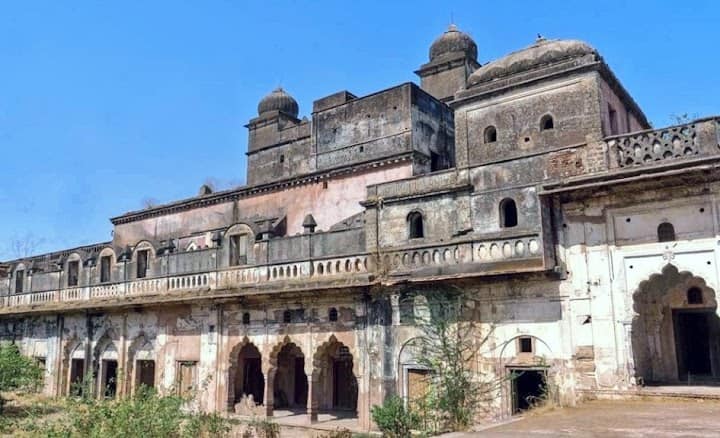The Taj Mahal Palace: A Timeless Icon of Luxury and Heritage

Introduction
The Taj Mahal Palace, located in the heart of Mumbai, is one of India’s most iconic landmarks. Established in 1903, it is a historic luxury hotel that has hosted royalty, world leaders, and celebrities over the years. With its magnificent architecture and world-class hospitality, the Taj Mahal Palace stands as a symbol of India’s rich heritage and global stature.
The Vision and History
The Taj Mahal Palace was envisioned by Jamsetji Tata, the founder of the Tata Group, after he was allegedly denied entry into a European-only hotel. Determined to create an institution that symbolized Indian excellence, he laid the foundation for what would become India’s first luxury hotel.
The hotel officially opened its doors in 1903, revolutionizing the Indian hospitality industry. Over the decades, it has witnessed significant historical events, from British colonial rule to India’s independence, making it an integral part of Mumbai’s history.
Architectural Brilliance
The Taj Mahal Palace is a masterpiece that combines elements of Indo-Saracenic, Islamic, and Gothic architectural styles. Designed by W.A. Chambers and Sitaram Khanderao Vaidya, the hotel’s aesthetic grandeur includes domes, archways, and intricate detailing that reflect the opulence of a bygone era.
Key architectural highlights include:
- The Grand Central Dome: Inspired by Renaissance architecture, this dome is a defining feature of Mumbai’s skyline.
- Marble Staircases and Crystal Chandeliers: These elements add to the hotel’s regal ambiance.
- Intricate Jali Work and Handcrafted Furnishings: Showcasing Indian craftsmanship, these details enhance the hotel’s uniqueness.
Luxurious Offerings and Accommodations
The Taj Mahal Palace is synonymous with world-class luxury. The hotel boasts 285 rooms and suites, each offering spectacular views of the Arabian Sea or the vibrant city of Mumbai. The rooms exude elegance with vintage decor, plush furnishings, and modern amenities.
Notable Suites:
- The Tata Suite: A grand residence offering unparalleled luxury and exclusivity.
- The Rajput Suite: Designed to reflect royal Indian aesthetics with intricate artwork.
- The Presidential Suite: Often chosen by world dignitaries for its lavish design and amenities.
A Culinary Haven
The Taj Mahal Palace is home to some of the finest restaurants in India, serving an array of global cuisines. Some of its most celebrated dining establishments include:
- Wasabi by Morimoto – An award-winning Japanese restaurant offering authentic flavors.
- Golden Dragon – One of India’s first fine-dining Chinese restaurants, famous for its dim sums and Peking duck.
- Souk – A rooftop restaurant offering Mediterranean delicacies with stunning sea views.
- Shamiana – An all-day dining restaurant known for its diverse menu and historic significance.
- Harbour Bar – Mumbai’s first licensed bar, providing an exquisite selection of cocktails and premium beverages.
The Taj Mahal Palace and Indian History
The hotel has been a silent spectator to many historical events. During World War I, it was transformed into a hospital for wounded soldiers. Post-independence, it continued to be a hub for political and cultural gatherings.
One of the most tragic events in the hotel’s history was the 2008 Mumbai terror attacks. The hotel was severely damaged, but the resilience of its staff and the spirit of Mumbai ensured that it was fully restored and reopened, standing as a symbol of endurance and strength.
Iconic Guests and Global Recognition
Over the years, the Taj Mahal Palace has hosted numerous distinguished guests, including:
- Mahatma Gandhi
- Queen Elizabeth II
- Barack Obama
- The Beatles
- Shah Rukh Khan and other Bollywood celebrities
Its commitment to excellence has earned it global recognition, including being India’s first hotel to be trademarked for its unique identity and legacy.
The Taj Mahal Palace Today
Today, the Taj Mahal Palace continues to be a beacon of luxury and heritage. It serves as a preferred destination for travelers, dignitaries, and history enthusiasts alike. The hotel is also actively involved in sustainability initiatives, promoting eco-friendly practices while maintaining its high standards of luxury.
Conclusion
The Taj Mahal Palace is more than just a hotel; it is a living testament to India’s hospitality, resilience, and rich cultural heritage. Its timeless elegance, historical significance, and commitment to world-class service ensure that it remains one of the most treasured landmarks in India.
Whether you seek a luxurious retreat, an architectural marvel, or a glimpse into India’s past, the Palace offers an experience like no other. It continues to redefine grandeur and remains an enduring symbol of India’s illustrious history and hospitality excellence.







